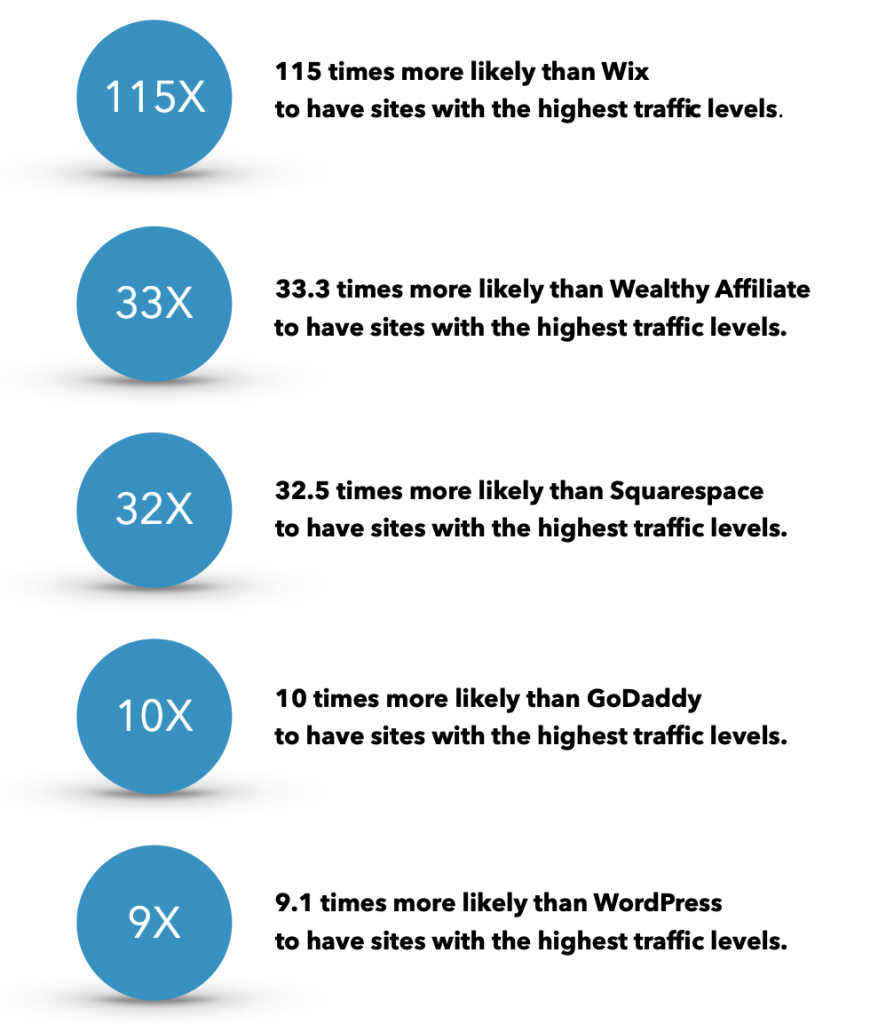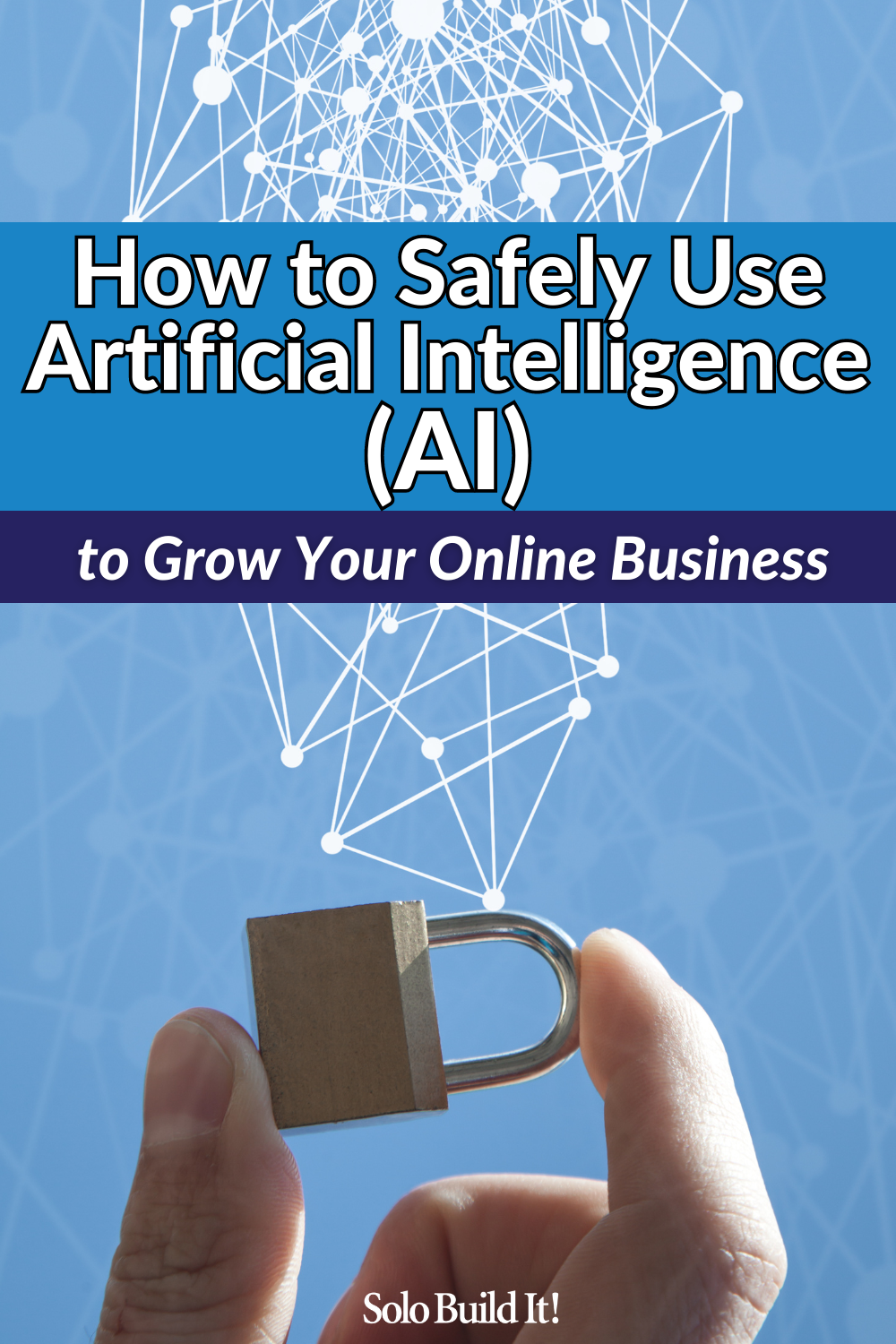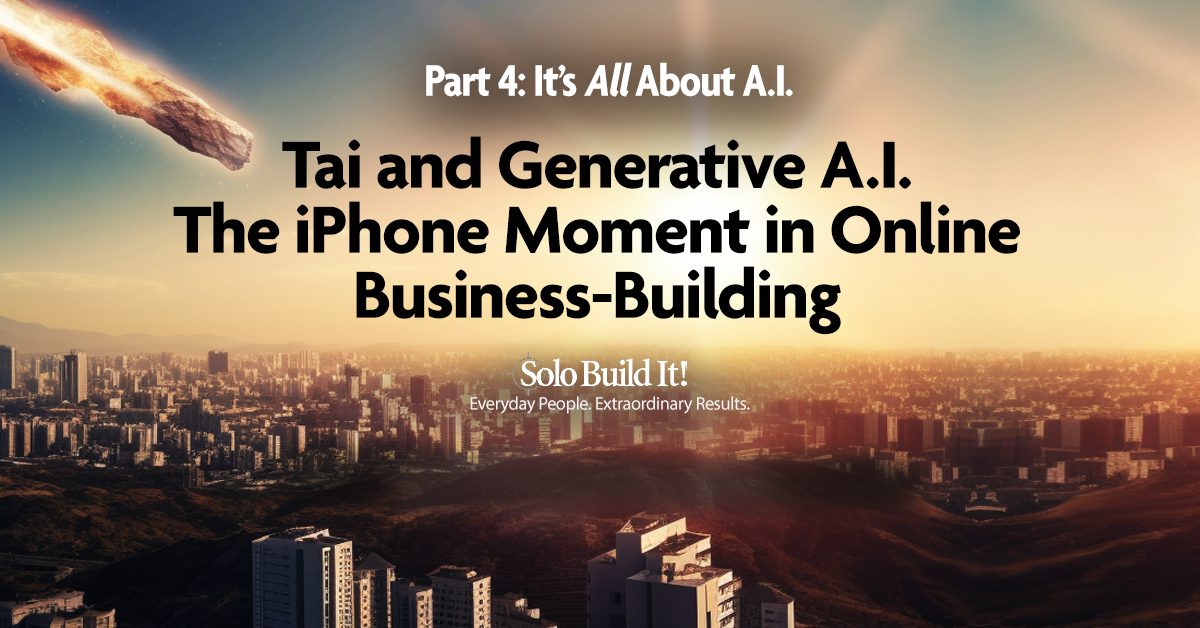Whether talking about reusable rockets, cures for cancer, or autonomous vehicles, Artificial Intelligence (“A.I.”) infuses and amplifies all other technologies — everything. A.I. is the linchpin for it all, the core technology for the next 10-20 years.
And now it’s about to infuse your online business. Actually, you have already experienced some of the many benefits of A.I. without even knowing it.
From your smartphone’s facial recognition to the helpful Google assistant or Siri recommendations to Google’s RankBrain, an important part of its search algorithm, A.I. is already part of your daily online life.
But it’s barely scratching the surface. A.I. has been slowly brewing for the past decade. The pot is boiling now, though. In short, we’re entering the “suddenly” part of “gradually then suddenly.”
And GAI, specifically, is boiling the lid right off the pot! As we’ve seen, this new type of artificial intelligence creates new content from existing content. It can be used to generate new images, text, videos, music or programming code, all in response to a well designed prompt from you.
How We Got Here
The concept of generative artificial intelligence can be traced back to the late 1950s and early 1960s. A notable early example of generative A.I. is Arthur Samuel’s checkers-playing program, developed in 1959.
In true “gradually then suddenly” tradition, the field of generative A.I. progressed slowly for decades. It significantly advanced in the 2010s, particularly with the advent of deep learning and generative adversarial networks (GANs) in 2014.
But it was Google that turned the burners on high with its release of the concept of the Transformer technology as a research paper in 2017, a gift to the world as open-source, rather than patent-protecting it.
Experts in the field intuitively recognized this as the right answer for natural language processing (NLP). Work started intensively on it.
On June 11, 2018, OpenAI released the first version of GPT, known as GPT-1, as a research paper (titled “Improving Language Understanding by Generative Pre-Training”), the methodology and “a scalable, task-agnostic system.”
This was widely considered a breakthrough in the field of natural language processing. OpenAI showed that it was possible to train large language models that could generate text that was the closest ever to human-written text.
The research paper and the methodology behind GPT-1 allowed researchers and developers to study and build upon its concepts. The release of GPT-1 was more focused on sharing the research findings and the model’s architecture, than on providing a publicly accessible service like its successors.
GPT-2 was released on February 14, 2019. Although three versions of varying parameter size were released, OpenAI never launched GPT-2 in its full form due to their worry about potential misuse.
It was judged to be a significant success, able to generate text that was more realistic and coherent than GPT-1’s text. It was also able to translate languages and write different kinds of creative content.
GPT-3 launched on June 11, 2020, also considered to be a significant improvement over previous versions. It was much larger and more powerful, and it could generate text that was more realistic and coherent. GPT-3 has been used to create a variety of applications, including chatbots, text generators, and translation tools.
OpenAI described GPT-3.5 as “a set of models that improve on GPT-3 and can understand as well as generate natural language or code.” Its final version, 3.5-turbo, came out on March 1, 2023.
It uses a different architecture that allows it to generate text that’s more realistic and coherent, and it’s able to follow instructions more effectively than GPT-3. It was optimized for conversation, but works fine for completions, too.
ChatGPT launched on November 30, 2022. This was the version that finally caught the mass market’s attention, probably because of its conversational interface. This GAI tool allows you to type in (or speak) questions, in natural language, on any topic. It responds with a comprehensive answer, including essays, in seconds!
Finally, GPT-4 hit the world on March 14, 2023, to wild and wide acclaim that this was OpenAI’s most powerful system yet. It surpasses GPT-3.5 significantly in every test.
The recent introduction of plugins enables GPT to talk to other apps like search engines, code interpreters, food apps, etc. This effectively connects GPT to the internet and the world. It will be a game-changer for GPT, allowing it to talk to external apps like Zapier, Wolfram and Code interpreters. OpenAI may have ushered in a new era of A.I. app stores.
All this power has raised concerns about safety.
Up until ChatGPT, OpenAI was only known to the professional A.I. community and a relatively small number of amateurs with interest in the field. To be sure, knowledge of this GPT model was growing…
Gradually.
Interest exploded with the release of ChatGPT. It took the world by storm! How stormy?
An “All at Once” Hurricane
ChatGPT reached 1 million users in only five days post-launch! To show you exactly how suddenly, here’s how long it took other popular products to reach the open 1 million user mark…
ChatGPT — 5 days
iPhone — 2.5 months
Instagram — 2.5 months
WhatsApp — 3 months
Spotify — 5 months
Facebook — 10 months
Pinterest — 20 months
Twitter — 24 months
Netflix — 42 months
It reached 100,000,000 users (yes, 100 times more users) less than 2 months after that. It took TikTok, one of the fastest ever, 9 months. Instagram 30 months…
ChatGPT — 2 months
TikTok — 9 months
Instagram — 30 months
Pinterest — 41 months
WhatsApp — 42 months
iPhone — 43 months
Facebook — 54 months
Spotify — 55 months
Twitter — 60 months
Netflix — 120 months
It had more than 1 billion visitors in the month of February, 2023, 1.5 billion in March.
If you were still thinking that GPT is a fluke, uptake like this is a statistically significant sign that GPT delivers a powerful combination of “easy to use, ” “fun,” and “useful.”
Its speed of spread is all the more impressive in that it’s not an inherently viral product. One person uses it at a time with no natural viral spread gimmick.
In other words, it’s far more than hype. Shallow hype can, at times, go far, but not to 100,000,000 users in 2 months. No, this has all the signs of being the real deal, and definitely not something to miss.
Another sign? Google, widely considered to lead the world in A.I., declared a “code red” shortly after OpenAI launched ChatGPT, an indication that it considered ChatGPT to be an existential threat to its search engine.
Within weeks, they announced that their equivalent of ChatGPT, Bard, would be launching soon. And indeed they did, on March 21, 2023.
That’s an astoundingly fast turnaround decision for a company this size.
Another sign?
Other companies (Facebook, as well as the Chinese mega-stars Baidu, Tencent and Alibaba) announced their own GAI chat initiatives. Trillion-dollar companies don’t change plans on a dime unless they know a sea change is coming.
Gradually, then suddenly, the whole world seems to be in!
So are we!
GAI… Meet Tai!
The rest of this post shows you how to use GAI, and specifically GPT-4, to its best business-building effect. We will use Tai as an example because that’s what we know best.
Obviously, we hope you’ll give it a try. Trying it is free. Using it is virtually free. Even heavy usage costs very little.
And if you choose not to, you’ll still finish this post with a good understanding of how to use GPT (or Bard) to build traffic-generating content.
When new technological developments or inventions gain so much popularity, so quickly, it has to be good. That’s why we’re incorporating the power of A.I. into SBI! in unique and powerful ways.
 The core philosophy remains the same…
The core philosophy remains the same…
OVERdeliver on search intent. From our earliest days, when SEOers were obsessed with how many keywords you should fit on the head of a pin, we taught folks how to combine “OVERdelivery” with SEO best practices.
The results? SBI! members (“SBIers”) range from 9X more likely to build high-traffic sites than WordPress users to 115X more likely than Wix users, with multiple other “wins” (vs. GoDaddy, Squarespace, and others) in between. It’s all documented (in reproducible detail, should you choose to run your own test) in this white paper.
Now we’re reproducing the same approach in Tai’s integration into SBI!. Tai is enabling SBI! members to do what they already do, even better. In other words…
Tai Is Taking SBI! to the Power of 2
Tai reinforces our original roots. It is totally organic, working with search, not trying to trick it.
In short, adding TAI takes SBI! to the power of 2. It’s a doubling down on our commitment to empower people to create the world’s most effective web pages.
The key to building a successful online business has always been to deliver truly exceptional content. OVERdelivering actually.
Tai, integrated into SBI! as your very own Business-Building Assistant, is at your side at all times, ready to…
- help you build the perfect prompt, one that takes maximum advantage of the newly released GPT-4
- explain the search intent of the primary keyword (topic) for any planned web page
- suggest complementary keywords for that page
- write a web page that’s considerably better with Tai’s disciplined, step by step approach
- iterate successive drafts until it’s ready for your final rewrite when you… JUST. ADD. YOU.✔️
Tai frees you up so you can concentrate on that final step… blending in your own special expertise and unique experience in your own style and voice.
Here’s one example of how Tai does it differently…
Crafting an outstanding prompt that gets the most out of GPT is perhaps the most important step you can do.
You could create your own, but there’s no way it’s going to match the level of the prompts generated by Prompt Build It!. I really don’t want to sound arrogant about this but I’m afraid it’s almost inevitable…
No matter how many genius tips and articles you’ve read about creating brilliant prompts, unless you’re incredibly exceptional, your prompt just won’t be as good.
And that is just one of Tai’s features/benefits. The biggest one is that you’ll create exceptional content that works! More of it, and faster, better than anything you’ve done today.
It still takes work. It always will, even with A.I.
There’s already a growing amount of misinformation about GAI, ChatGPT, etc, ranging from GRQ (“Get Rich Quick”) to overpromising but underdelivering. It reminds us of SBI! vs the same type of noise since early days…
Same old noise, new packaging.
We’ll never say it’s quick and easy. It’s not. But at least you don’t have to waste your time sorting out what’s good and what’s not. Even worse is getting misled by the bad that sounds good. We sort all that for you.
Just like SBI!, Tai breaks creating content down into simple, doable, repeatable steps… a discipline.
With Tai, there’s nothing else you’ll need to know. You’ll do all that needs to be done and nothing more, nothing less, all without missing a beat…
Prompt until you and Tai have built “state-of-A.I.” content on whatever the topic may be. Next, all you have to do is…
Just. Add. You. ✔️
You rewrite Tai’s final output (as determined by your best-practice prompts) until…
- your new web page fits your style and voice
- your passion lights it up, and
- it includes all the info and experience you have on the topic.
In other words… you gotta add you!
Your knowledge and passion.
Your style and voice.
You.
Until you stand out like a laser in the dark.
Remember, although GPT can do a brilliant job when properly prompted, it can only pull together published information.
It will never itself have any sort of personal experience in your niche…
Only you have done that.
GPT doesn’t have “street cred” in your niche. Only you do (and if you don’t, SBI! shows you how to build it).
Only you have your own original thoughts on a particular topic. And finally…
Only you can rewrite it all in your own inimitable style (or even better) until you are happy that you are OVERdelivering original high value content that will delight your visitor’s search intent.
When you do that, you create content that Google loves, too, the same Google who’ll be penalizing all those who abuse GAI. Their “tsunami of pap” will float your boat, in comparison.
Those who fail this final “just do you” step will end up, once again, crushed onto rocky shores by the tidal wave of a new Google algorithm release.
And that brings up another reason to “do you”…
Google is on record that it will not penalize content written using models like GPT if the author creates value that pleases its searchers.
The following, though, is based on our historical knowledge of how Google works and how too many marketers, and others with nefarious agendas, behave. I foresee too many folks (for Google) abusing GPT by creating web pages that are increasingly (80%, 90%, 95%, 99%, even 100%) written by GPT.
At some point, Google will grow frustrated at figuring out where to draw the line. Or is unable to.
When that happens, it’s a matter of time until it penalizes web pages that are created using GPT or other GAI’s. Don’t think that would happen? Just ask folks about Google’s Panda, Penguin, and Hummingbird algorithm releases.
SBIers know to play it straight. They always have, most of them anyway. So they’ve avoided massive Google algorithm changes since the earliest of days.
Tai’s recommended process continues that long tradition. “Just do you” is part of that. So is understanding and being within OpenAI’s policy boundaries.
Tai’s step-by-step process implements strategies that are designed to stay in Google’s good graces.
Here’s how we have always thought about it…
Google is in the business of delivering search results. Its searchers are happiest when they find a web page that delivers above and beyond (“OVERdelivers”) what they want (their “search intent”).
Happy searchers return to Google. That makes for a happy Google. A happy Google rewards your web pages with high rankings, if they consistently OVERdeliver.
That’s why “Job 1” at SBI! has always been to enable SBIers to create high value content that OVERdelivers. Getting the SEO right has become simpler and simpler over the years and has never been manipulative.
“The proof,” as they say, “is in the pudding.” SBIers have always significantly outperformed solopreneurs from any other platform, from Wix to WordPress.
“And the proof of that,” as we say, “is in the studies,” which comes with methodology that lets you verify their veracity.
For more than 20 years, this evergreen approach has worked significantly better for SBIers than for those on any other platform. Once you master traffic-building with SBI!, you always will.
Bottom Line?
You’ll find Tai’s approach to content creation unusually high-yield. After you learn to prompt well, generating all-world content becomes an efficient and reproducible exercise. Why and how does Tai add so much value to the already effective SBI!?
Tai plugs into the beginning of SBI!’s C T P M process, right into the C (“Content”) that drives the T P M (Traffic PREsell Monetize), which in turn is what drives your success.
SBI! harnesses GAI (GPT-4, ChatGPT, Bard, DALL-E) in the persona of Tai, your Business-Building Assistant. You’ll be focusing this disruptive technology on the creation of world-class, theme-based content that OVERdelivers for your visitors, even better and faster than today’s SBI!. To summarize…
Tai will accelerate and grow your online business’s success to the power of “SBI!².” With Tai, SBI! gets you “there” faster and more effectively than ever.
There’s one final matter to get right…
The Question of Credit
How much credit should you give GPT in terms of authorship. According to OpenAI, they do want you to credit GPT.
Here’s our recommendation, based on the use of Tai and upon following the recommended process in the Tai Action Guide…
[Author Name] wrote this article, and used GPT-4, OpenAI’s large-scale language-generation model, as a research assistant to develop source material. The author wrote the final draft in its entirety and takes ultimate responsibility for the content of this publication.
Reword it according to your own circumstances and comfort level. But stay within OpenAI’s rules.
Some people have asked, “Why credit GPT at all? It’s not like they would know, after all.”
- If OpenAI asks this of you, it’s the right thing to do.
- OpenAI is likely able to detect content that its technology generated.
If you do rewrite the content completely, it’s true that it would not be able to pick up patterns that would identify your content as generated by GPT-4.
In that case, it becomes a discussion about whether you should feel morally bound. And on that note…
Ultimately, it’s up to you whether you want to credit your research assistant. Know, though, that there may be ramifications for failure to do so if detected.
On the other hand, it’s possible that Google may decide that they don’t like GAI-generated content. That may happen as an algorithmic change, or it may already be buried as a negative in their algorithm.
There’s no way to know. Do not expect a truthful answer to this question from Google. That will not stop the SEO community from drifting into a “belief” that eventually becomes “fact” (without hard evidence).
Your takeaway…
If you do decide to give GPT-4 credit, and you should, you have an extra reason to completely rewrite the final draft created in response to your prompts.
That way you don’t have to recognize GPT-4 as anything more than what it was — a research assistant.
Otherwise, if, say, 60% of GPT-4’s draft makes it into your final web page, and if you stick to the truth (and you should), you may have to credit GPT-4 as “a contributing writer.” The risk is greater whether you decide to give credit or not.
In Part 5, by the time you finish, you’ll never anthropomorphize these A.I. wunderkinds again! Oops, I just did it, lol.
Seriously, if you’re going to be using A.I. to grow your business, you need to understand how it works. Most people don’t.
Unless you do, you’ll lack the deep understanding that enables you to intuitively understand that one word would work better than another in your prompt.
See you in Part 5. It’ll be interesting,
If you’ve missed some of the parts of this series, they’re available here.
By the way, if you have questions or comments, leave them below. I read them all and will answer many.
Ditto for using A.I. to grow an online business. Is there a topic that I haven’t covered? Let me know how you would like me to extend the series. I’m all 👂s!
Until we meet again, be great.
Images by DALL-E and Midjourney.










